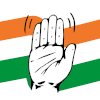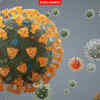01/10COVID-19 cases continue to spread amongst kids
)

The second wave of COVID-19 has been no less devastating for younger kids. With kids as young as 4 months catching COVID, doctors have also observed a sharp rise in the overall caseloads in comparison to last year’s figures.
02/10Symptoms you need to lookout for, as per doctors
)

While experts do assert that pediatric cases of COVID-19 still tend to be on the milder side, and resolve quicker in comparison to adults, the symptoms being observed right now have undergone certain changes. Until previously, only a concurrent fever or unexplained tiredness was a tell-tale sign of COVID in children. The mutant virus has now unleashed more symptoms and is causing more symptoms as well.
Diagnosing COVID-19 in kids, who are rather prone to falling sick can be difficult. However, right now, these could be the major symptoms to watch out which are common in kids:
03/10Tummy ache
)

Gastrointestinal symptoms of COVID, becoming more prevalent in the second wave are also affecting kids more. Unusual stomach ache, bloating, heaviness, abdominal cramps could all be signs that your child is suffering from gastrointestinal symptoms of COVID-19.
Some children could also complain of lost appetite, or experience no desire to eat food, which should also be a sign to watch out for.
04/10Diarrhoea
)

Diarrhoea and vomiting are also signs which seem to be commonly affecting kids who do catch COVID-19 right now. While there is no reasoning for the same, it could only signify potential ways the virus starts to attach itself to ACE2 receptors present along the gut linings, and cause widespread inflammation and digestive trouble.
05/10Moderate or high fever
)

Kids can record a fever which could be as high as 102 degrees Fahrenheit when they do catch COVID-19. While a moderately high temperature is also common to other routine viral illnesses in circulation, a COVID fever can be accompanied by chills, pain, weakness. In most cases, the fever breaks after 2-3 days (for kids). However, if the symptom persists for over 5 days, seek specialized care.
06/10Persistent cold and cough
)

Although uncommon, a persistent cough or a nagging cold could act as a sign of upper respiratory tract infection in children. A cough or cold could also be associated with other symptoms listed above, and take longer to resolve. Sore throats could also strike.
It should be noted that while adults are prone to severity right now, cough, cold affecting kids could be on the milder side. Signs of inflammation, such as chest pain, shortness of breath may be less commonly observed.
07/10Drowsiness, tiredness
)

Kids can also experience a sudden drop in energy levels if there's a suspected COVID-19 exposure. Fatigue, dreariness, tiredness, poor sleep and lethargy could often act as first signs that the body's immune system is busy fighting the infection.
Behavioural issues, especially amongst younger kids could also be associated with fatigue and weakness induced by the infection. Children may become moodier, or cry more often.
08/10Irregular skin rashes
)

Skin rashes and the infamous COVID toes first came to be observed in children last year. While rashes and other skin symptoms also seem to affect adults, they are still one of the commonest signs of infections in kids with COVID-19.
While kids are prone to catching allergies and rashes, as a parent or caregiver, any signs of unusual bumpy skin, red rashes, mottled skin, urticaria (hives), sudden discolouration of the fingers and the toes should be considered warning signs of getting tested.
Rampant inflammation can also cause kids to develop runny, bloodshot eyes, which is rather uncommon in adult symptomatic cases.
09/10What sort of treatment do they require?
)

Despite a rise in symptomatic infections among kids, doctors have repeatedly asserted that most COVID cases in kids are mild, and can be easily resolved at home.
The symptoms, too, may resolve rather quicker in comparison to adults and no specialized treatment or care is necessary, unless otherwise advised.
10/10Do not self-medicate, follow all preventive guidelines
)

If a child happens to develop symptoms, get a test and consult a doctor (do remember to highlight if the child has an underlying illness or condition which may make him/her more vulnerable). Usually, OTC medications such as paracetamol and multivitamins are sufficient for a child, and no specific repurposed COVID treatment drugs (meant for adult use) are advised unless the symptoms are serious.
Encourage your child to get plenty of rest, follow precautions and drink plenty of hydrating fluids.
It is important to know that even if your child continues to show symptoms, but tests negative, following symptomatic treatment and protocols are crucial.

















































































closecomments
SIGN IN WITH
FacebookGoogleEmail